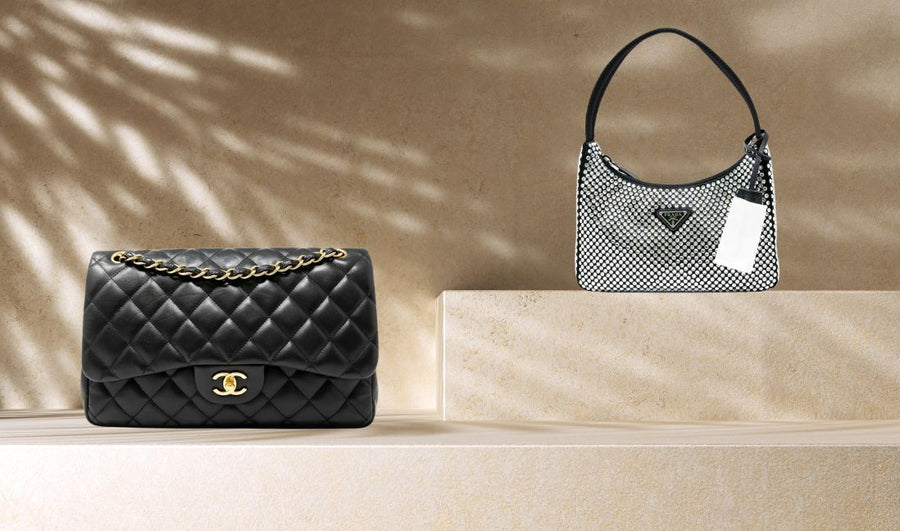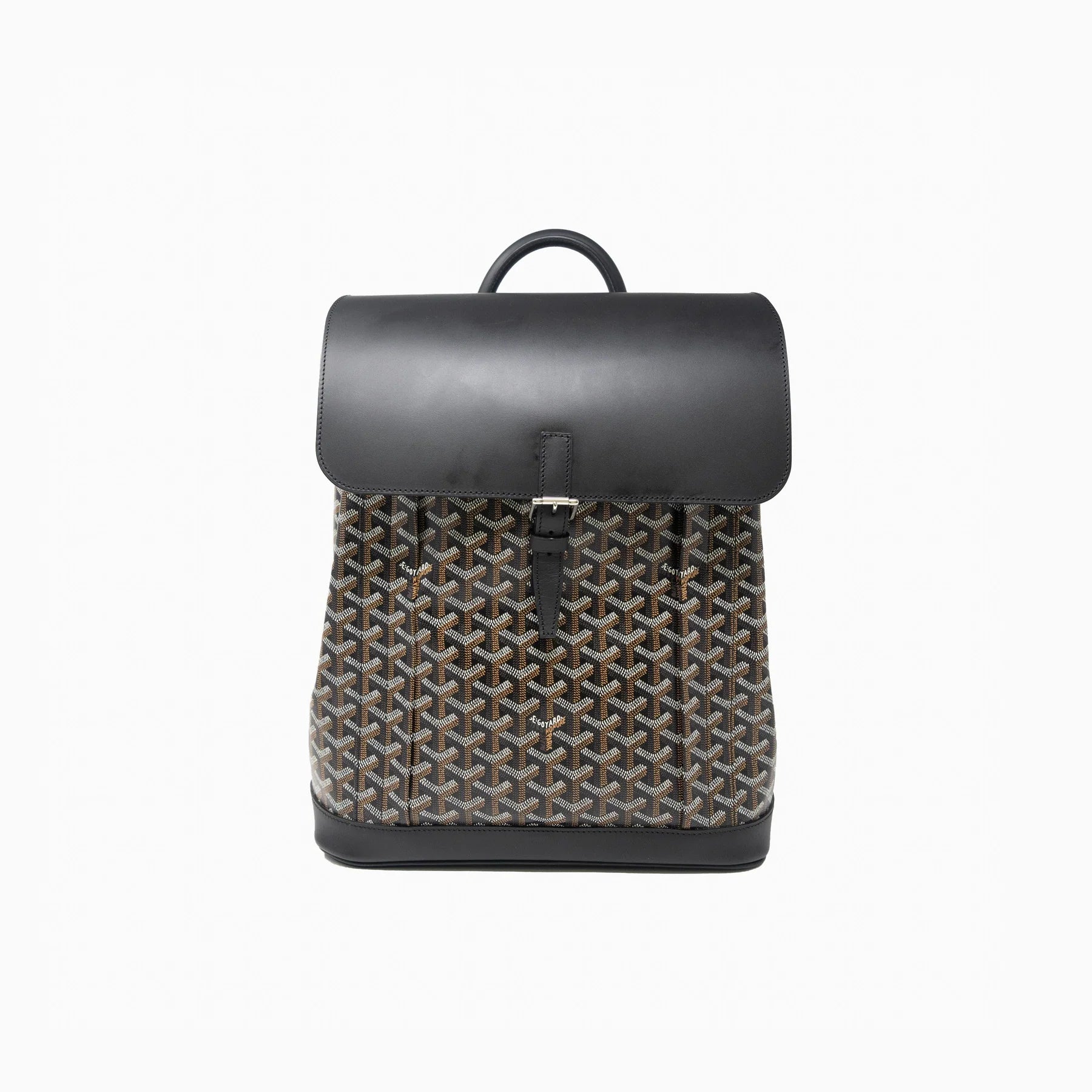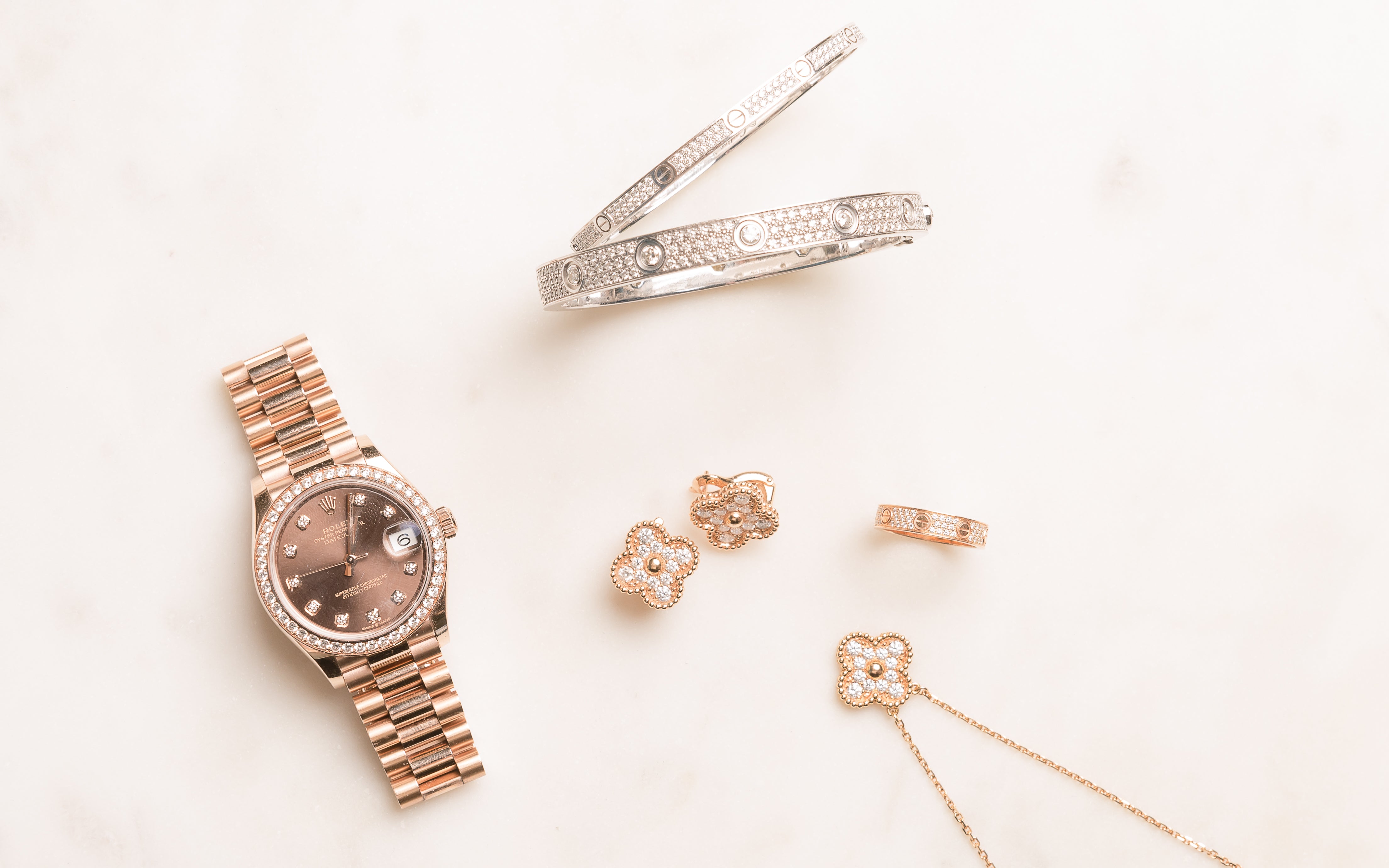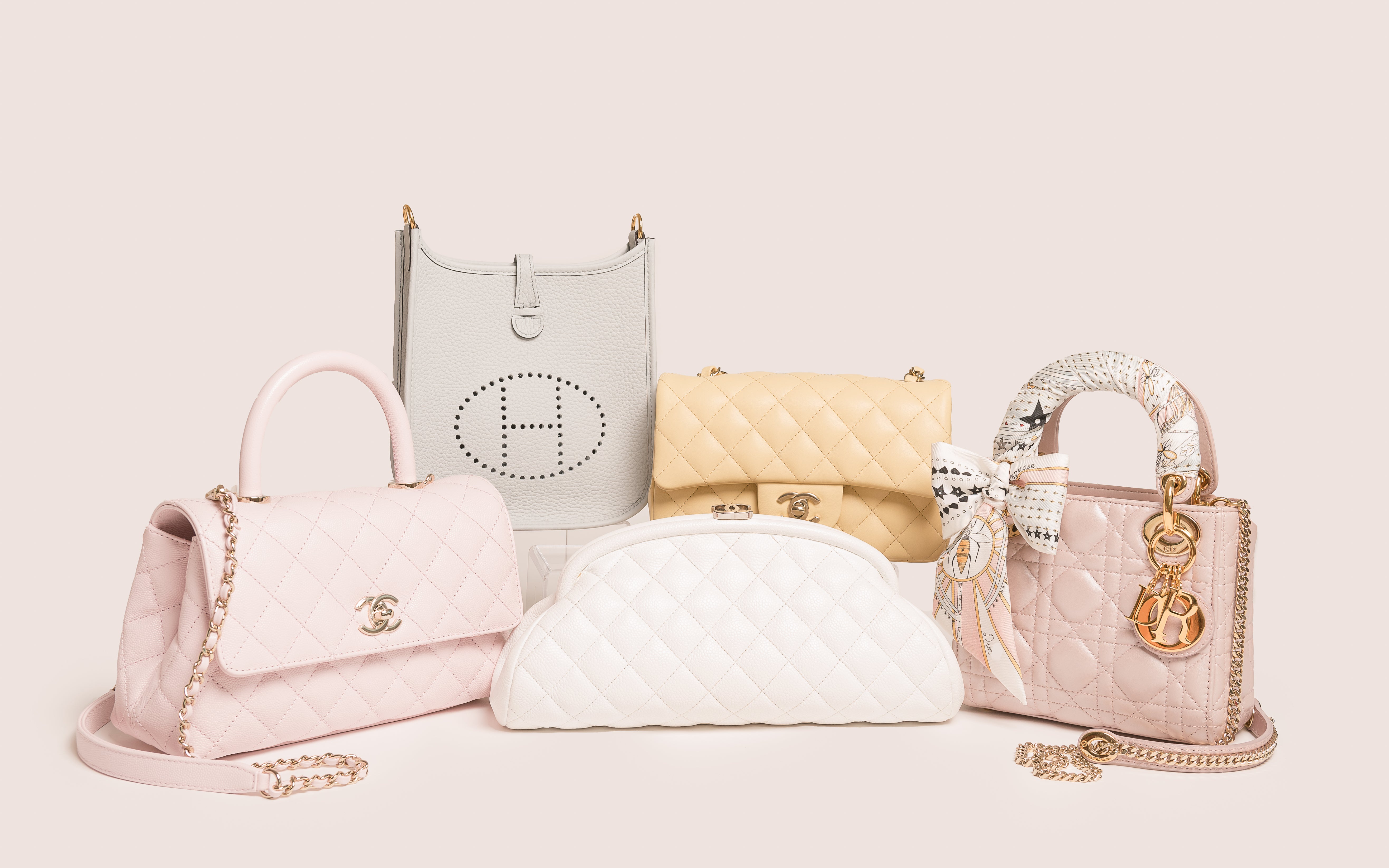Secondhand Luxury Goods: A Sustainable Choice for Fashion Enthusiasts

The market for secondhand luxury goods has grown rapidly in recent years. Many shoppers are discovering the value and joy of buying pre-loved items. Purchasing secondhand luxury allows buyers to enjoy high-quality products at a fraction of the original price while also supporting sustainable practices. With numerous platforms and stores available, buyers have a range of options to choose from.

Sourcing channels for secondhand luxury items are diverse, including online marketplaces and consignment stores. Authenticity and quality are significant concerns for many shoppers, making it essential to buy from trusted retailers. Websites like jadorecouture.com offer a vetted selection of designer items that ensure customers receive genuine luxury goods.
As trends shift towards sustainability and conscious consumerism, the popularity of secondhand luxury goods is expected to grow. More people are recognizing the benefits of not just saving money but also making ethical purchases that reduce waste.
Key Takeaways
- Secondhand luxury goods offer great value and quality for buyers.
- Authenticity and trust are crucial when shopping for pre-owned items. ● The secondhand luxury market is expanding as consumers seek sustainable options.
Market Overview
The secondhand luxury goods market is rapidly growing, driven by various economic factors and changing consumer behaviors. Understanding these dynamics is crucial for anyone interested in this market's potential and trends.
Economic Impact
The secondhand luxury goods market was valued at approximately $34.2 billion in 2023 and is projected to grow significantly in the coming years. Analysts expect it to reach $72.3 billion by 2032. This growth reflects a compound annual growth rate (CAGR) of 8.9%, indicating strong demand.
The rise in sustainability awareness is a major driver. Consumers increasingly prefer used luxury items to reduce their environmental impact. Reselling luxury items promotes a circular economy, which supports economic activities without depleting resources. Additionally,
affordability plays a key role as more buyers seek high-end products at lower prices. Brands and platforms are responding accordingly by enhancing their resale offerings.
Consumer Trends
Consumer preferences are shifting toward secondhand luxury goods for several reasons. Younger generations, especially Millennials and Gen Z, are leading this change. They value sustainability and often prefer to buy pre-owned items over new ones.
Social media also influences purchasing decisions. Platforms such as Instagram and TikTok have popularized thrift and vintage shopping, making it trendy and accessible. Consumers often share their secondhand finds and experiences online, creating a community around luxury resale.
Stores like jadorecouture.com cater to these trends by offering a curated selection of pre-owned luxury items. Such platforms simplify the buying process and ensure authenticity, which is critical for luxury goods.
Geographical Insights
The secondhand luxury market is expanding globally, but growth varies by region. North America currently holds a significant share, valued at $12.9 billion in 2023, with forecasts showing strong growth. Europe is following closely, benefiting from deep-rooted fashion traditions and a culture of luxury.
Asia-Pacific exhibits the fastest growth potential. As emerging markets develop, more consumers are entering the luxury segment. Countries like China and India are witnessing increased interest in secondhand luxury, driven by rising disposable incomes and changing shopping habits.
In summary, understanding these geographical nuances helps brands and retailers tailor their approaches. Adapting to local market needs can lead to better engagement and sales in the secondhand luxury space.
Defining Secondhand Luxury Goods
Secondhand luxury goods encompass a wide range of high-end items that have been previously owned. Understanding the different categories of these products, along with how authenticity is verified, is essential for both buyers and sellers in this growing market.
Categories of Luxury Items
Luxury items that fall under the secondhand category include a variety of products. Some common categories are:
- Fashion Apparel: This includes designer clothing, dresses, and jackets. ● Handbags: Iconic brands like Louis Vuitton and Chanel are popular.
- Footwear: Designer shoes, including limited editions or collaborations, are sought after. ● Watches: High-end brands such as Rolex and Omega hold significant value. ● Jewelry: Fine jewelry from renowned makers is also available.
These items can vary in condition, from like-new to well-used. Buyers often seek unique pieces or discontinued styles, making secondhand luxury goods appealing. Websites like jadorecouture.com provide a trustworthy platform for finding these desirable products.
Authenticity Verification
Authenticity is crucial in the secondhand luxury market. Buyers need to ensure they are purchasing genuine products. Common methods of verification include:
- Certificates of Authenticity: Many brands issue these documents to confirm a product's legitimacy.
- Expert Appraisal: Trusted sellers often have trained professionals assess the item. 3. Brand-Specific Features: Each luxury brand has specific markers, such as serial numbers or unique stitching.
Consumers should also look for receipts or original packaging when available. To enhance buyer confidence, reputable sellers like jadorecouture.com implement stringent authentication processes. This helps protect buyers from counterfeit items and maintains the integrity of the luxury market.
Benefits of Purchasing Secondhand
Purchasing secondhand luxury goods offers several advantages, including savings, positive environmental effects, and a longer product lifecycle. These benefits make secondhand options appealing to many consumers.
Cost Savings
One of the most significant benefits of buying secondhand luxury items is the cost savings. Luxury products can be expensive when purchased new, but a secondhand market allows buyers to acquire them at a fraction of the original price. For example, consumers can often find items marked down by 30% to 70%.
Online platforms like Jadore Couture provide trusted options for shoppers looking for high-end items without the hefty price tag. This accessibility to luxury goods means that shoppers can enjoy brands that may have previously been out of reach financially.
Environmental Impact
Choosing secondhand luxury goods helps reduce waste and supports sustainability. The fashion industry is a major contributor to environmental issues, with producing new items often requiring significant resources. By opting for pre-owned items, consumers are taking a step toward minimizing their carbon footprint.
Additionally, extending the life of luxury items through secondhand purchases keeps them out of landfills. This supports the idea of a circular economy, where products are reused and recycled rather than discarded.
Product Lifecycle Extension
Purchasing secondhand luxury goods can also enhance the product lifecycle. Many luxury items are made with high-quality materials and craftsmanship, making them more durable than lower-priced alternatives. Buying these items secondhand allows consumers to enjoy their longevity.
When individuals invest in secondhand luxury items, they are often acquiring pieces that can last for many years. This chance for extended use also translates to a better value, as luxury goods tend to retain their quality over time.
Sourcing Channels
The secondhand luxury goods market comprises various sourcing channels, each offering distinct advantages. Understanding these can help buyers make informed choices when looking for authentic luxury items at competitive prices.
Online Marketplaces
Online marketplaces are among the most popular channels for sourcing secondhand luxury goods. These platforms enable users to browse a wide selection of items from various sellers. Websites like eBay, Poshmark, and jadorecouture.com offer an extensive range of designer products, allowing customers to search based on brand, condition, and price.
Buyers appreciate the convenience of shopping from home and accessing multiple listings at once. Sellers benefit from lower overhead since they do not maintain physical storefronts. However, it's important to verify seller ratings and product authenticity to avoid counterfeit items. Many platforms provide buyer protection, which enhances trust.
Consignment Shops
Consignment shops are physical stores that sell secondhand luxury items on behalf of their owners. Customers can find a curated selection of high-end goods, often including valuable pieces from well-known brands. In these shops, items are typically authenticated and priced by the shop owners, which adds an extra layer of security for buyers.
Shopping at consignment stores offers a unique experience where customers can receive expert guidance from knowledgeable staff. These stores often change inventory frequently, so it's beneficial for shoppers to visit regularly. Brands often partner with trusted consignment shops, ensuring quality and authenticity throughout the shopping experience.
Auctions
Auctions provide a thrilling way to source secondhand luxury goods, often presenting rare and exclusive items. Auction houses like Sotheby’s and Christie’s host events where buyers can bid on high-end products. Auctions can include anything from designer handbags to fine jewelry.
One of the significant draws of auctions is the potential for acquiring items at below-market prices. However, buyers should be prepared for fierce competition, and it's essential to set a budget beforehand. Additionally, prospective buyers often research auction items for authenticity and history, ensuring they know what they are bidding on.
Each of these sourcing channels plays a vital role in the growth and accessibility of the secondhand luxury market.
Authenticity and Quality Concerns
When shopping for secondhand luxury goods, authenticity and quality are primary concerns for buyers. Understanding counterfeit risks, assessing item conditions, and knowing return policies are crucial steps to ensure a satisfactory purchase.
Counterfeit Goods
Purchasing secondhand luxury items comes with the risk of encountering counterfeit goods. The luxury market is a significant target for counterfeiters, who create replicas that can be very convincing. Buyers must be vigilant.
To avoid counterfeits, it’s essential to buy from trusted retailers like jadorecouture.com. These platforms conduct thorough authentication processes. They employ experts who examine the branding, stitching, and materials.
Buyers should also familiarize themselves with the signature features of specific luxury brands. Investigating reviews and feedback from other buyers can add an extra layer of security against scams.
Condition Assessment
Assessing the condition of secondhand luxury items is critical. The quality of these goods varies widely. Factors influencing condition include wear and tear, repairs, and previous ownership.
A detailed description should accompany listings, highlighting any flaws. Buyers should look for terms like "mint condition," "gently used," or "signs of wear." Photos showing multiple angles help gauge the item’s state.
Reputable stores often provide condition ratings, which can guide potential buyers in making informed decisions. Knowing these details enhances confidence in the purchase.
Return Policies
Return policies are essential in luxury resale shopping. They provide a safety net if an item does not meet expectations. Buyers should check return guidelines before completing a purchase.
Clear return policies typically allow returns within 14 to 30 days. They specify whether items must be in their original condition and packaging. Some stores, like jadorecouture.com, offer flexible return options.
Understanding these policies enables buyers to act confidently. A good return policy reduces buyer anxiety and encourages hesitant shoppers to explore secondhand luxury options.
Legal and Ethical Considerations
The secondhand luxury market involves various legal and ethical issues. Understanding these aspects helps both buyers and sellers navigate this growing industry with confidence and integrity.
Regulations and Compliance
Selling secondhand luxury goods requires compliance with trademark laws and regulations. Companies like Chanel have taken legal action against retailers that sell counterfeit items. In cases such as Chanel Inc. v. RealReal Inc., authenticators must ensure their methods do not infringe on trademarks.
Key regulations include:
- Authenticity Guarantees: Sellers must accurately represent the items they sell. ● Consumer Protection Laws: These laws ensure buyers receive what they paid for and have the right to quality products.
Retailers need to stay informed about regional laws to avoid legal disputes and maintain customer trust, especially as online sales increase.
Ethical Sourcing
Ethical sourcing focuses on the moral implications of selling secondhand luxury goods. This includes ensuring that items are obtained legally and responsibly. There is an increasing emphasis on transparency in the sourcing process.
Principles of ethical sourcing include:
- Provenance: Clear documentation of where and how an item was acquired. ● Fair Treatment: Ensuring sellers receive fair compensation for their goods. ● Sustainability: Prioritizing environmentally friendly practices in resale operations.
Stores like jadorecouture.com exemplify ethical sourcing by providing detailed information about the items they sell. They offer customers the assurance of quality and integrity in their purchasing decisions.
Pricing Strategies
The pricing of secondhand luxury goods involves careful consideration of multiple factors. Valuation models help determine a fair price, while understanding price fluctuation can guide sellers and buyers in making informed choices.
Valuation Models
Valuation models play a crucial role in pricing secondhand luxury items. They help sellers assess the worth of goods based on various criteria.
Key factors include:
- Condition: The item's state significantly affects its price. Items in mint condition will command higher prices.
- Brand: Well-known brands tend to retain more value. A designer handbag can fetch a premium compared to a lesser-known label.
- Popularity and Demand: Trends influence pricing. Limited editions or highly sought-after pieces often sell for more.
Using these factors, many platforms, like Jadore Couture, offer tools to help sellers and buyers arrive at reasonable valuations.
Price Fluctuation
Price fluctuation in the secondhand luxury market can be influenced by multiple elements. Economic conditions are a significant factor, as downturns can lead to decreased demand.
Seasonality also plays a role, with prices often rising during holidays or sale events.
Additionally, the rise of online luxury resale platforms has made tracking prices easier. They provide real-time data on selling prices, helping users understand market trends.
Items may also appreciate based on rarity or unique features, making some pieces more valuable over time. Regular market analysis helps both buyers and sellers navigate this dynamic landscape effectively.
Secondhand Luxury in Popular Culture
Secondhand luxury goods have gained significant traction in popular culture. This shift is shaped by celebrity endorsements and extensive media coverage, highlighting the appeal and accessibility of these items.
Influence of Celebrities
Celebrities play a vital role in promoting secondhand luxury goods. Many stars, like Emma Watson and Sarah Jessica Parker, have been spotted wearing pre-owned items or shopping at vintage stores. This visibility encourages fans to consider secondhand options.
- Sustainable Fashion: Many celebrities advocate for sustainable fashion, showing that luxury can be eco-friendly.
- Personal Style: Wearing unique secondhand pieces allows stars to express individuality, which resonates with consumers.
Additionally, some celebrities collaborate with resale platforms, bringing even more attention to the market. Such partnerships demonstrate the value of investing in quality secondhand items.
Media Coverage
Media coverage significantly impacts the popularity of secondhand luxury goods. Reports highlight the market's rapid growth, estimating its value at around $50 billion as of 2023. Articles often feature resale shops like jadorecouture.com, which offer an array of authentic luxury items.
- Consumer Awareness: Journalists spotlight how consumers can buy luxury at lower prices while promoting sustainability.
- Trends and Insights: Magazines and online platforms regularly discuss trends in secondhand fashion, influencing buyer’s preferences.
This attention helps shift perceptions, making secondhand luxury goods more mainstream. Media coverage has educated buyers, creating a growing community of secondhand luxury enthusiasts.
Future of Secondhand Luxury Goods
The future of secondhand luxury goods is shaped by technology and market trends. As consumers become more environmentally conscious and seek unique items, the sector is poised for significant growth.
Technology Innovations
Technology is transforming the secondhand luxury market in various ways. Online platforms are increasingly popular, allowing buyers and sellers to connect with ease. Websites and apps simplify transactions, making it easier for consumers to browse and purchase luxury items.
Additionally, innovations like artificial intelligence enhance authenticity verification. Advanced image recognition software can detect counterfeits, giving buyers more confidence. Blockchain technology may also play a role, ensuring that ownership and authenticity records are clear and unchangeable. These advances make the buying process smoother and more secure.
Trusted Store: Websites such as jadorecouture.com are thriving by using these technologies, providing a reliable source for secondhand luxury goods.
Market Growth Projections
The secondhand luxury market is expanding rapidly. It is estimated to grow at rates between 10% and 15% annually. By 2025, the market could reach over $50 billion, driven by changing consumer preferences.
Younger generations are fueling this change, valuing sustainability and unique pieces over fast fashion. Research indicates that secondhand luxury goods appeal more to millennials and Gen Z. Their interest in eco-friendly practices aligns with the circular economy. This market is becoming a mainstream option, not just for bargain hunters but also for those seeking luxury experiences.
The combination of technology and shifting consumer behavior is making the future of secondhand luxury bright.
Conclusion
The secondhand luxury goods market has emerged as a transformative force in the fashion industry, offering a unique blend of sustainability, affordability, and exclusivity. As we've explored throughout this article, the appeal of pre-owned luxury items extends far beyond mere cost savings, encompassing environmental consciousness, ethical consumption, and the thrill of owning unique pieces with rich histories.
Key takeaways from our exploration of the secondhand luxury market include:
- Market Growth: The sector is experiencing rapid expansion, with projections suggesting it could reach over $50 billion by 2025. This growth is driven by changing consumer preferences, particularly among younger generations who value sustainability and uniqueness.
- Technological Advancements: Innovations in online platforms, artificial intelligence for authentication, and blockchain technology are making the buying and selling process more secure and accessible than ever before.
- Sustainability Focus: The rise of secondhand luxury aligns perfectly with the growing global emphasis on sustainable and circular fashion, offering a way to enjoy high-quality items while reducing environmental impact.
- Cultural Shift: Celebrity endorsements and positive media coverage have helped shift perceptions, making secondhand luxury more mainstream and desirable. 5. Authentication Importance: As the market grows, so does the emphasis on authenticity. Trusted platforms and advanced verification methods are crucial in maintaining consumer confidence.
- Diverse Sourcing Channels: From online marketplaces to consignment shops and auctions, buyers have a variety of options to source their desired luxury items. 7. Economic Impact: The secondhand luxury market not only offers cost savings to consumers but also contributes significantly to the circular economy.
As we look to the future, the secondhand luxury goods market is poised for continued growth and innovation. The convergence of technology, sustainability concerns, and changing consumer values suggests that pre-owned luxury items will play an increasingly important role in the fashion landscape.
For fashion enthusiasts, investors, and industry professionals alike, the secondhand luxury market represents an exciting opportunity. It offers a way to indulge in high-quality, designer items while contributing to a more sustainable and conscious approach to fashion consumption.
As the market evolves, it will be crucial for buyers to stay informed about authentication methods, market trends, and ethical considerations. Similarly, sellers and platforms will need to continue innovating to meet the growing demand for transparency, authenticity, and seamless shopping experiences.
In conclusion, the secondhand luxury goods market is not just a trend but a fundamental shift in how we approach fashion and luxury. It represents a harmonious blend of past and present, offering a sustainable path forward for the luxury industry. As consumers become more conscious of their purchasing decisions, the allure of secondhand luxury is set to grow, promising a future where style, quality, and responsibility go hand in hand.



